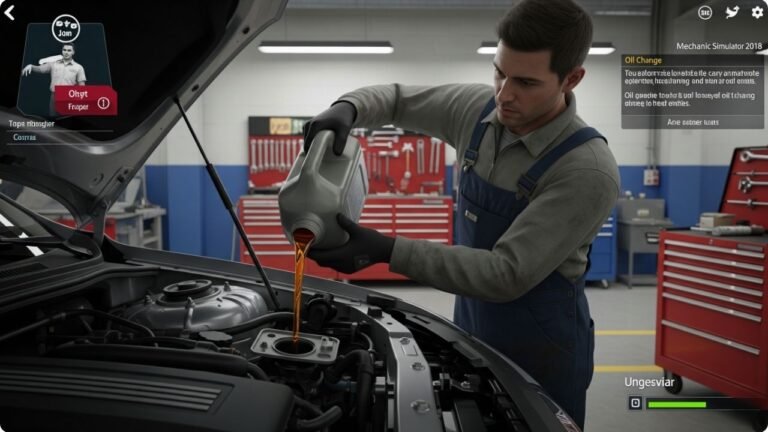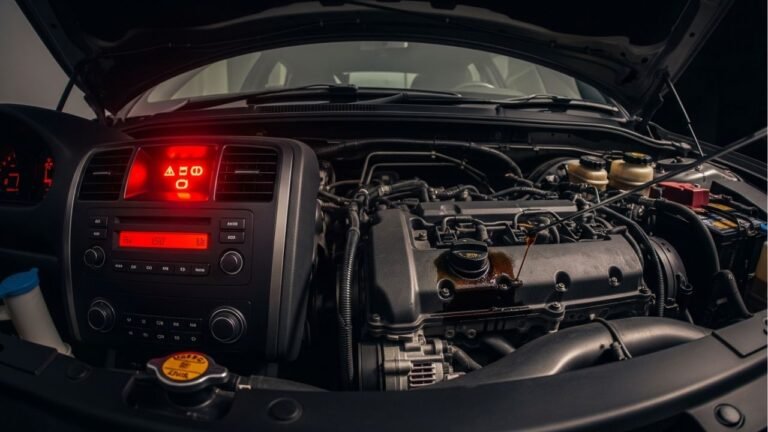How to Clean Oil Car: The Honest, Easy Guide

We’ve all been there. You’re topping off the oil, maybe in a rush, and suddenly—splat! A thick, dark stream drips down your engine, hits the fender, and slides into places you didn’t even know existed. Or maybe it’s a spill in the trunk after picking up a quart or two. Either way, cleaning it feels like a nightmare. But trust me, learning how to clean oil Car isn’t as scary as it seems.
In fact, once you understand the process, have the right tools, and know what not to do, it becomes pretty simple—even satisfying. In this guide, I’ll walk you through everything you need to know, step by step, just like I’d tell a good friend. We’ll talk about my own messy experiences, common mistakes, and how to clean up without wrecking your paint or engine.
So, grab a rag, roll up your sleeves, and let’s dig into the best way to clean oil from your car—from engine bay to upholstery.
The Different Types of Oil Messes You Might Face

Here are the most common oil mess situations:
- Oil spilled inside the engine bay
- Oil stains on the car’s body or paint
- Oil leaked onto the driveway or garage floor
- Oil soaked into your trunk carpet or seats
- Old, sticky residue from previous spills
Each of these requires a slightly different cleaning method, and I’ll break it down for you so you can tackle the mess the right way. But first, let’s cover the essential tools and cleaners you’ll need.
Your Must-Have Cleaning Kit for Oil Spills
If you’re going to seriously clean your car like a pro, you’ll need a few key items in your kit. Think of it like prepping for battle—your tools are your armor.
Here’s what I always keep handy:
| Tool/Cleaner | Why You Need It |
| Microfiber Cloths | Gentle on surfaces and absorb oil well |
| Degreaser (Citrus or Engine) | Breaks down thick oil residue fast |
| Baking Soda or Cornstarch | Absorbs fresh spills on fabric or carpet |
| Stiff Nylon Brush | Scrubs textured surfaces without damage |
| Shop Vacuum (Wet/Dry) | Sucks up oil-soaked powder or moisture |
| Hose or Pressure Washer | Rinses engine bay and undercarriage effectively |
| Dish Soap (like Dawn) | Cuts through grease on paint and plastic |
| Rubber Gloves | Keeps your hands safe from chemicals and mess |
This combo has saved me more times than I can count. Whether it’s a quick wipe or a deep clean, these tools will have your back. Now, let’s start with one of the trickiest spots: the engine bay.
Under the Hood: Cleaning Oil in the Engine Bay
Cleaning oil from the engine bay might feel intimidating. You see wires, hoses, and a ton of mysterious components. I used to just shut the hood and pretend I didn’t see the mess. But ignoring it can cause corrosion, attract dirt, and even affect your engine’s performance.
Here’s how to tackle it safely:
- Let the engine cool – Never clean a hot engine. You could crack parts or burn yourself.
- Cover sensitive parts – Use plastic bags to cover the alternator, battery, and any exposed electronics.
- Dry wipe first – Use a microfiber cloth to pick up as much loose oil as possible.
- Apply degreaser – Spray a degreaser directly on the oily spots. Let it sit for 5–10 minutes.
- Scrub gently – Use a nylon brush to loosen grime, especially around the valve cover or oil cap.
- Rinse with low pressure – Use a garden hose (not a pressure washer here) to rinse away the cleaner.
- Dry thoroughly – Pat dry with cloths and let it air out.
Pro Tip: If you’re wondering how to clean oil Car like a mechanic, this method is the gold standard. Just be gentle and take your time. It’s not about rushing—it’s about getting it right.
Cleaning Oil Off Your Car’s Paint Without Damaging It
I’ll be honest—spilling oil on your car’s paint can feel like a punch to the gut. It’s sticky, dark, and makes your ride look neglected. Worse, if left too long, it can degrade the paint or clear coat.
Here’s what to do when it happens:
- Don’t panic – The sooner you act, the better.
- Blot, don’t wipe – Use a dry cloth to blot up as much oil as you can. Rubbing spreads it.
- Apply dish soap – Mix warm water with grease-cutting dish soap. Dab it on the stain.
- Use a microfiber towel – Gently wipe the area in circles. Never use paper towels—they scratch.
- Rinse and dry – Use clean water to rinse, then dry with a soft towel.
- Wax the area – Oil can strip wax, so reapply a protective coat when you’re done.
Once I made the mistake of wiping with a paper towel and scratched my hood. Lesson learned—microfiber is king. When you’re dealing with car paint, always treat it like delicate skin.
What If the Oil Soaked Into the Upholstery?
Spills inside the car are their own nightmare. Whether it’s in the trunk or on the seat, oil loves to hide in fabrics. I once spilled a quart in the back of my SUV, and the smell haunted me for weeks.
Here’s the step-by-step for tackling oil inside your car:
- Absorb the fresh spill – Cover it with baking soda, cornstarch, or kitty litter. Let it sit for at least an hour.
- Vacuum the powder – Use a shop vac or strong vacuum to suck it up completely.
- Spray degreaser – Lightly mist a degreaser or carpet-safe cleaner on the spot.
- Scrub with a brush – Gently scrub in circles to break up the stain.
- Blot with a towel – Press firmly with a clean towel to lift the oil.
- Repeat if needed – Older stains may take 2–3 rounds.
- Let it dry – Air it out for several hours. Leave windows open if needed.
If you’re wondering how to clean oil Car from inside the vehicle, this method is gentle but effective. Don’t rush the drying—it prevents mold and keeps the smell from coming back.
Cleaning the Driveway or Garage After a Car Oil Leak
Here’s a bonus tip: once your car is clean, don’t forget the floor where the leak happened. I’ve scrubbed my fair share of concrete—and nothing ruins curb appeal like an oily driveway.
Quick driveway clean-up steps:
- Cover the oil with cat litter or sawdust. Let it absorb overnight.
- Sweep up the next morning.
- Scrub the area with a degreaser and a stiff broom.
- Rinse with water (pressure washer helps).
- For stubborn stains, try baking soda and vinegar paste.
It’s not technically part of cleaning your car, but it completes the job. A spotless car deserves a clean driveway.
How to Prevent Oil Spills Before They Start
It might sound obvious, but prevention is the most underrated solution. After I cleaned up one too many trunk disasters and grimy engine bays, I made a few changes that saved me hours later.
Here’s how to stop oil messes before they even start:
- Use a funnel: It sounds simple, but many spills happen because people try to pour oil by hand. A cheap plastic funnel will prevent most accidents.
- Secure oil containers in your trunk: Always store oil upright in a box or tray. I keep mine in a plastic bin with absorbent pads under it—just in case.
- Don’t overfill: During an oil top-up, watch the dipstick. Going over the limit leads to leaks or overflow.
- Tighten caps and filters: After an oil change, double-check that the oil filter and fill cap are snug. A loose cap is a disaster waiting to happen.
- Inspect regularly: If you notice buildup around the engine or filter, clean it early. A small leak grows fast.
When you’re proactive, you won’t need to Google “how to clean oil Car” every month. It’s a small effort now that pays off big time later.
Quick Fixes vs. Deep Cleaning: When to Go All-In
Not every oil mess needs the full clean-up routine. Sometimes a quick fix will do the trick. Other times, if you let it sit or it’s deeply embedded, you need to go all-in.
Here’s a breakdown of when to do what:
| Situation | Quick Fix or Deep Clean? | Why It Matters |
| Small drop on engine cover | Quick wipe with degreaser | Prevents dust buildup and is easy to access |
| Oil on leather or fabric seats | Deep clean with absorbent + brush | Oil seeps into materials fast, needs full removal |
| Fresh oil on trunk liner | Absorbent + vacuum = Quick fix | Can clean most of it before it soaks in |
| Grease caked on engine block | Deep clean, rinse, degrease | Needs time to break down the buildup |
| Smell of oil in the car | Deep clean interior | Oil vapor lingers—needs full extraction |
So next time you notice a spot, ask yourself: is this just a dot, or a deeper problem? Don’t be afraid to go deep if you have to. Your car (and your nose) will thank you.
Natural and DIY Alternatives: Clean Without Harsh Chemicals
I love a good degreaser, but sometimes I don’t want that harsh chemical smell hanging around. Plus, if you’ve got pets or kids, you might want something safer. That’s where natural solutions shine.
Here are my favorite DIY oil-cleaning solutions:
- Baking soda + white vinegar: Sprinkle baking soda on the oil stain, then spray with vinegar. It bubbles up and lifts grime. Let it sit, then blot.
- Lemon juice + salt: For car paint or plastic surfaces, this combo gently cuts through grease without scratching.
- Cornstarch or baby powder: These absorb fresh spills on fabric without leaving behind strong smells.
- Dish soap + warm water: Still one of the best degreasers around. Safe for most surfaces.
These methods work surprisingly well. I once used vinegar and baking soda on an oil stain in my old Camry’s trunk—it came out better than with commercial cleaner. Natural doesn’t mean weak. It just means safe and smart.
The Psychology of a Clean Car: More Than Just Looks
Let’s get a little personal for a moment. Cleaning oil off your car isn’t just about maintenance—it’s about feeling good in your space. A clean car boosts your mood, your confidence, even your sense of control.
Here’s what I’ve noticed over the years:
- When my car is clean, I feel better about myself. It’s like starting the day with a made bed.
- Cleaning up oil makes me more aware of my car’s health. I notice small leaks early and save money.
- Friends and passengers comment on how clean my ride smells and looks—it’s a proud feeling.
- I focus better while driving. No distractions, no weird smells, no sliding around trying to avoid sticky spots.
You might be here looking for how to clean oil Car because of a mess. But cleaning your car is also a way to reclaim your space and mental clarity. It’s like therapy, only cheaper—and your car benefits too.
Personal Tips, Tricks, and Oil Cleaning Hacks
Finally, let me leave you with a few of my favorite hacks—things I’ve picked up over the years, sometimes by accident, often by desperation.
- Keep paper towels in the glove box: A fast wipe beats a stained dashboard.
- Line your trunk with a rubber mat: Oil won’t soak through, and cleanup takes seconds.
- Use old socks as applicators: Slip one on, spray degreaser, and wipe tight spots.
- Store oil bottles in zipper bags: If they leak, the mess is contained.
- Buy engine degreaser in a foam can: It clings better, especially on vertical surfaces.
- Try citrus-based cleaners: They smell better and still break down oil fast.
These aren’t just shortcuts—they’re life-savers. Trust me, after spilling a quart of 5W-30 on a 90-degree day, you learn what works and what’s hype.
Final Thoughts: Clean Car, Clean Mind
We’ve come a long way, haven’t we?
You started with a spill—or maybe just curiosity about how to clean oil Car. Now you’ve got the knowledge, tools, and confidence to clean up oil inside, outside, and underneath your ride. More importantly, you understand the why behind it—the pride of a clean car, the prevention of future issues, and the peace of mind that comes with it.
Oil stains don’t have to ruin your car or your day. They’re just messes waiting to be handled—with a little elbow grease and a lot of know-how.
So go ahead. Clean that car. Love that car. Drive it with confidence again.






